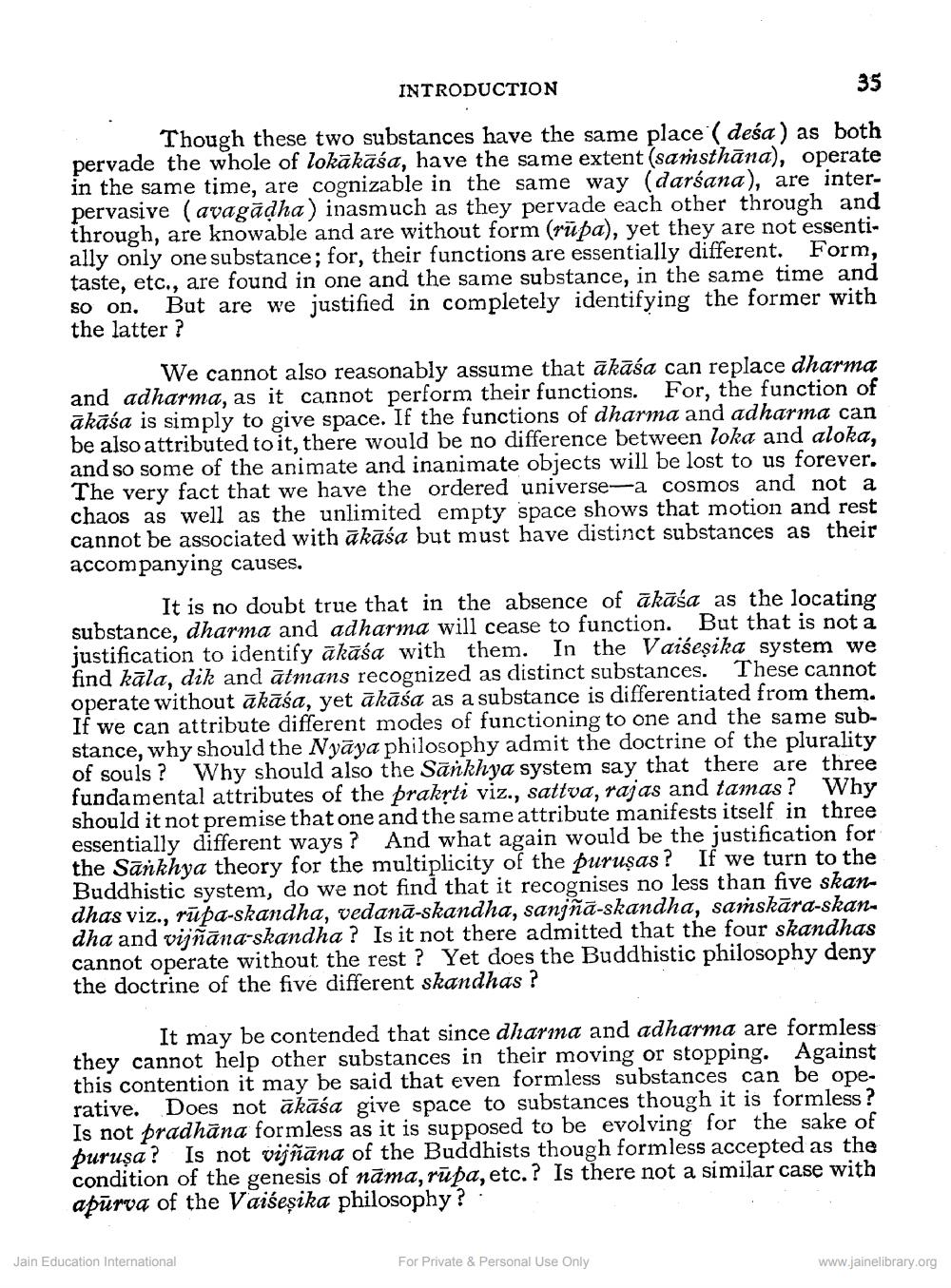________________
INTRODUCTION
35
Though these two substances have the same place ( deśa) as both pervade the whole of lokākāśa, have the same extent (sansthāna), operate in the same time, are cognizable in the same way (darśana), are interpervasive (avagādha) inasmuch as they pervade each other through and through, are knowable and are without form (rupa), yet they are not essentially only one substance; for, their functions are essentially different. Form, taste, etc., are found in one and the same substance, in the same time and so on. But are we justified in completely identifying the former with the latter ?
We cannot also reasonably assume that ākāśa can replace dharma and adharma, as it cannot perform their functions. For, the function of ākāśa is simply to give space. If the functions of dharma and adharma can be also attributed to it, there would be no difference between loka and aloka, and so some of the animate and inanimate objects will be lost to us forever. The very fact that we have the ordered universe-a cosmos and not a chaos as well as the unlimited empty space shows that motion and rest cannot be associated with ākāśa but must have distinct substances as their accompanying causes.
It is no doubt true that in the absence of ākāśa as the locating substance, dharma and adharma will cease to function. But that is not a justification to identify ākāśa with them. In the Vaiseșika system we find kāla, dik and ātmans recognized as distinct substances. These cannot operate without ākāśa, yet ākāśa as a substance is differentiated from them. If we can attribute different modes of functioning to one and the same substance, why should the Nyāya philosophy admit the doctrine of the plurality of souls? Why should also the Sankhya system say that there are three fundamental attributes of the prakrti viz., sattva, rajas and tamas? Why should it not premise that one and the same attribute manifests itself in three essentially different ways ? And what again would be the justification for the Sankhya theory for the multiplicity of the puruşas? If we turn to the Buddhistic system, do we not find that it recognises no less than five skandhas viz., rūpa-skandha, vedanā-skandha, sanjñā-skandha, saņskāra-skandha and vijñāna-skandha ? Is it not there admitted that the four skandhas cannot operate without the rest ? Yet does the Buddhistic philosophy deny the doctrine of the five different skandhas ?
It may be contended that since dharına and adharma are formless they cannot help other substances in their moving or stopping. Against this contention it may be said that even formless substances can be operative. Does not ākāśa give space to substances though it is formless ? Is not pradhāna formless as it is supposed to be evolving for the sake of puruşa ? Is not vijñāna of the Buddhists though formless accepted as the condition of the genesis of nāma, rūpa, etc.? Is there not a similar case with apūrva of the Vaiśesika philosophy ?.
Jain Education International
For Private & Personal Use Only
www.jainelibrary.org




